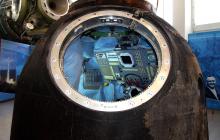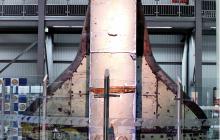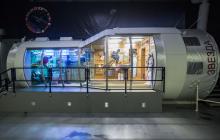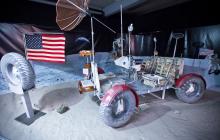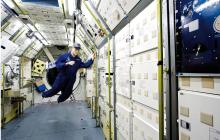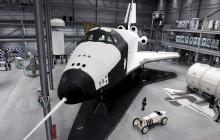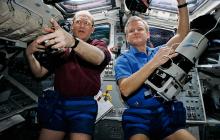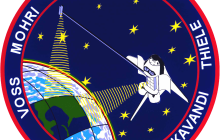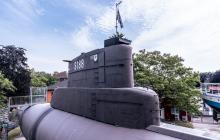Vostok 1 Spacecraft
The Vostok 1 spaceship was the first manned Soviet spaceship. The craft consisted of a spherical descent module, which housed the cosmonaut, instruments and escape system, and an instrument module, which contained propellant and the engine system. The technical and scientific equipment mainly consisted of telemetry and communication devices as well as landing sensors and the landing parachute. The cosmonaut was strapped to an ejection seat. Since it was not possible to sufficiently decelerate the landing capsule on reentry, the cosmonaut was ejected from the craft at an altitude of about 7,000 m and descended via parachute, while the capsule landed separately. The ejection seat could also be activated during take-off if a problem with the launch rocket occurred.
The first unmanned launch of a Vostok spaceship, without heat protection, parachute system and ejection seat, was performed on 15 May 1960 under the project name “Korabl Sputnik 1”, officially referred to as “Sputnik 4” to deceive the Western nations. With the spacecraft “Korabl Sputnik 2” (Sputnik 5) two dogs, Belka and Strelka, 28 mice and two rats were launched into orbit.
For the final tests of the ejection seat and the parachute system a dummy with the size and the weight of a human was used. The 90 minutes’ flight of “Korabl Sputnik 4” (Sputnik 9) on 9 March 1961 with the dog “Tschernuschka” and a dummy on board went without problems and both, the dog and the dummy returned to Earth unharmed.
Then, on 12 April 1961 the pilot and cosmonaut Yuri Gagarin finally took off into space as the first man in history with the spaceship Vostok 1. He orbited the Earth once and after a flying time of 1 hour and 48 minutes landed safely in Kazakhstan. Between 1961 and 1963 six manned Vostok missions were performed by the USSR.
The Vostok replica on display in the Technik Museum Speyer is a 1:1 rebuilt of the original spaceship with was crafted with great attention even to minor details.




